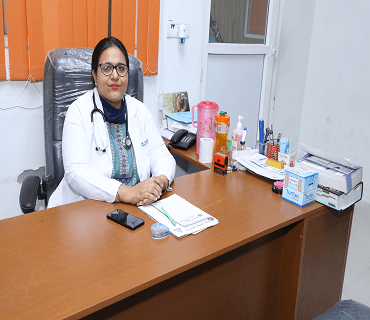
Working Time
- Mon-Thu 08:00 - 20:00
Friday 07:00 - 22:00
Saturday 08:00 - 18:00
Contact Info
-
Phone: 012-752-56660
. - info@gnhpalwal.com
Ask the Experts
Casuality Department
Casuality Department
Anemergency department (ED), also known as an accident & emergency department (A&E), emergency room (ER), emergency ward (EW)or casualty department, is a medical treatment facility specializing in emergency medicine, the acute care of patients who present without prior appointment; either by their own means or by that of an ambulance.
Due to the unplanned nature of patient attendance, the department must provide initial treatment for a broad spectrum of illnesses and injuries, some of which may be life-threatening and require immediate attention.
Emergency Physicians are highly educated and have training that crosses different medical specialties to meet demanding challenges. They are assisted by well-trained emergency nurses. As soon as a patient enters the department he/she is examined by a triage nurse and allotted to a zone depending on how serious he/she is.
Emergency
Various diseases seen in emergency
- Blacking out or unconsciousness
- Severe or unusual bleeding that won't stop
- Any accident on the road, at home or at the workplace
- Severe allergic reactions from insect bites, food or medications
- A gaping wound or broken bones
- Severe chest pain
- Breathing difficulty, asthma attacks
Various diseases seen in emergency
- Suspected stroke
- Suddenly can't speak or move
- Loss of vision or hearing
- Blood in vomitus
- Severe abdominal pain, persistent vomiting
- Seizures
- Drug overdose or swallowing poison
- Suicidal or homicidal thoughts, Shooting or stabbing
- Fever, cough, respiratory infection,
The very serious patients are immediately seen by a doctor. Patients with life-threatening conditions or those with time-critical conditions like heart attack, stroke or major accidents are managed in a separately dedicated zone called the Resuscitation Bay. The patients are shifted directly to this bay without having to wait and the doctors and nurses shall immediately get to assess and start interventions to stabilize the patient. It's here that the patients are put on ventilators, the chest is compressed and shocks delivered in an attempt to start a heart that has stopped beating, broken limbs are splinted and bleeding controlled. Special venous lines are secured and medications to improve the heart's pumping and improve blood pressure are started
We understand the vital role of optimal stabilization of the sick and injured patients during the GOLDEN HOUR and ensuring the best outcomes in terms of saving lives and bringing smiles back on the faces of our patients and their loved ones.




